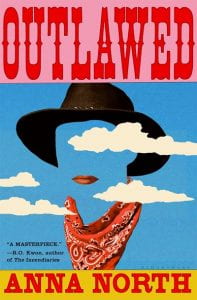As an English teacher in a Tasmanian senior secondary college, collecting resources is a task that oftentimes subsumes me. Every TV show or film I watch, or advert I come across; every song I hear and news article or book I read, part of my brain is thinking, “Oh this would be great for my lesson on X.” I am constantly collecting resources, but they’re just for me, for my style of teaching and with each comes an idea of how I’d use it. Some things, when they work, I share with colleagues, and they share with me, but it’s very subject-, module- and text-specific.
The teacher librarian’s role is quite different. The TL must think much more broadly when selecting resources, with the whole school community in mind. They can’t privilege one subject area over others, or one group of people over others.
Other things that the TL must factor in include
- budget constraints
- usefulness of the resource and its relevance to the curriculum
- age appropriateness
- current pedagogy
- accessibility
Most importantly, teacher librarians must collaborate with classroom teachers. There’s no point collecting resources for a subject area without guidance from the teachers. There are some resources that a TL might discover that are a perfect fit, that they would then share with the subject teachers, but as a subject teacher I know that a resource is no good to me if I don’t know what to do with it, or it doesn’t help me teach a specific idea.
The library needs to be relevant, and to stay relevant involves open communication between TLs and subject teachers as well as staying abreast of current events. As a senior secondary government school, our library stocks a wide range of material on ‘controversial’ topics because our curriculum focuses on developing students’ critical thinking skills. These topics are not just ones in our courses but also ones that many of our students are genuinely interested in learning about. There isn’t much that our TLs feel the need to censor.
It’s not just teachers that inform the selection of resources, though, but also the students themselves. Part of the mission of TLs is to develop and/or improve literacy standards and foster a love of reading (whether that be print, electronic or audio books, fiction or non-fiction). A school library is far more than a resource collection for staff. Engaging students in the selection process is one way to make the library relevant to them. One of our students has started borrowing books after seeing Netflix adaptations; she told us that she hadn’t read a book since grade 9 but is now flying through them. We are not only ensuring we have a selection of such texts but are planning a display of them too – adaptations are a good way of hooking new readers into the original texts.
When it comes to the final say on selecting resources, the word of the teacher librarian carries some weight. This is because of their understanding of copyright laws, which might prohibit the school from acquiring or using some resources; their knowledge of current pedagogy which they are required to stay abreast of (let’s face it, we all know some classroom teachers whose practice is a bit out-of-date); and of the school as a community.
According to my school’s ‘Collection Development Policy’, “it is the job of the Head Teacher/Librarian to have the final decision on the purchase of resources.” It also says that the “head teacher-librarian has responsibility for final say in the acquisition of print and electronic resources.” The policy statement sets out that the library “is the ‘management hub’ for all teaching and learning resources in the College”, and the ‘Materials Selection Policy’ states that
“[i]t is the primary objective of the College library to support the implementation and enrichment of the educational programs of the College. Materials are selected to serve both the breadth of the curriculum and the needs and interests of the students and teaching staff. It is the duty of the College library to provide a wide range of materials on all levels of difficulty, with diversity of appeal and the presentation of different points of view.”
I know from my own experiences that teacher librarians will go above and beyond to help classroom teachers find the best resources possible.


















Leave a Reply